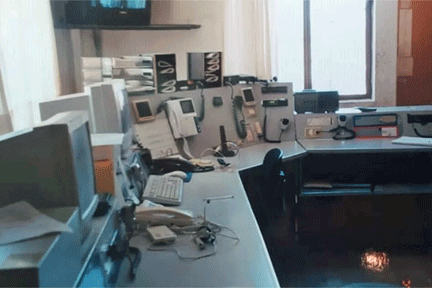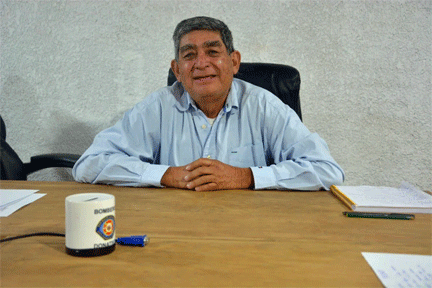The 911 System in all of Mexico began in San Miguel
News Category: News and Community News
-
San Miguel de Allende became an innovator at the state and national level of systematized emergency care, better known as 911
Published August 25, 2023
The 911 emergency response system began in a small town in Alabama in the United States, but in Mexico it began in San Miguel de Allende, which became an innovator at the state and national level of systematized emergency care.
In 1984 José Samuel Daniel Mercadillo Escobedo traveled to California to train with American firefighters, “firefighters in the United States were already organized for emergency care in a mutual aid project. When I returned in 1985, I gave the then mayor a project for emergency care, which would become a national precursor.”
He said that, in 1989, after the earthquake of 85, the first heads of Civil Protection were appointed in San Miguel de Allende; Samuel Mercadillo remained as technical director. In the 94-94 administration he was appointed director of Civil Protection, when these positions were still voluntary.
At that time, the rescuer said, the Municipal Council of Civil Protection was concretized, which was a citizen entity that sought to prevent contingencies in massive events, such as the sanmiguelada.
“The first 911 system was born in 1968, in a small town in Alabama in the United States; The first call was on February 01. By 1984 he started in California and I met him there; I thought it was a good project for San Miguel de Allende,” said Samuel Mercadillo.
He recalled that when the construction of the current fire station began on Conspiracy Boulevard, the building was designed not only for firefighters, but as a center for major emergencies, with a communications center, where 911 was born.
He shared that in this building a station was built for firefighters, a meeting room (known as a disaster room), a communications center and that these two were connected by two small tunnels for communications, as was done in the United States, where messages were passed in real time so that decisions could be made in the disaster room.
José Samuel Mercadillo reported that the 911 project was completed in 1994 with the support of the mayor of that time, “the council approved it and on September 15, 1994 all the radio equipment of all the corporations were linked and on September 29 the 911 line was enabled.
Mercadillo emphasized that the 911 line becomes popular because of the program of the 80s and 90s “Rescate 911”, but that landing it in San Miguel de Allende represented a challenge.
At that time, San Miguel’s numbers started with 2 and were followed by 5 digits; in such a way that the number of the presidency was 200001, that of the police 200022, so, after receiving refusals from Telmex for using that number, they looked for the owner of the 200911 line, who was the chronicler Luis Felipe Rodríguez, who agreed to transfer it.
“That’s how 911 in Mexico was born in San Miguel de Allende. In September 1004 Governor Carlos Medina Plascencia visited us and he received the first emergency call from the attention center at the fire station,” Mercadillo said.
He revealed that they even captured the entire telephone directory of San Miguel and when a call came in, they asked the number they dialed and that way they could quickly locate the address.
“The system worked very well, so Dolores Hidalgo joins and makes her 911. It worked very well until the federal government got the 066.”
Samuel Mercadillo pointed out that, in 2016, 911 returned, but this time at the national level, “today Canada, the United States, Mexico and some Latin American countries use the 911 system for emergencies.”
He stressed that from San Miguel de Allende they have been precursors for the culture of rescue and emergency care, from bringing training with North American firefighters, taking rescuers to train in different cities of the United States, implementing the organization for the Incident Command System and even the classification of medicines for natural disasters.
Previously, people donated medicines and moved them as is, scrambled; but in San Miguel, when the medicines arrived, they were separated by type of medicine or what it was for, so when it arrived at the care centers, it was very easy to locate this or that medicine. Today this is done at the national level.
-




Leave a Reply